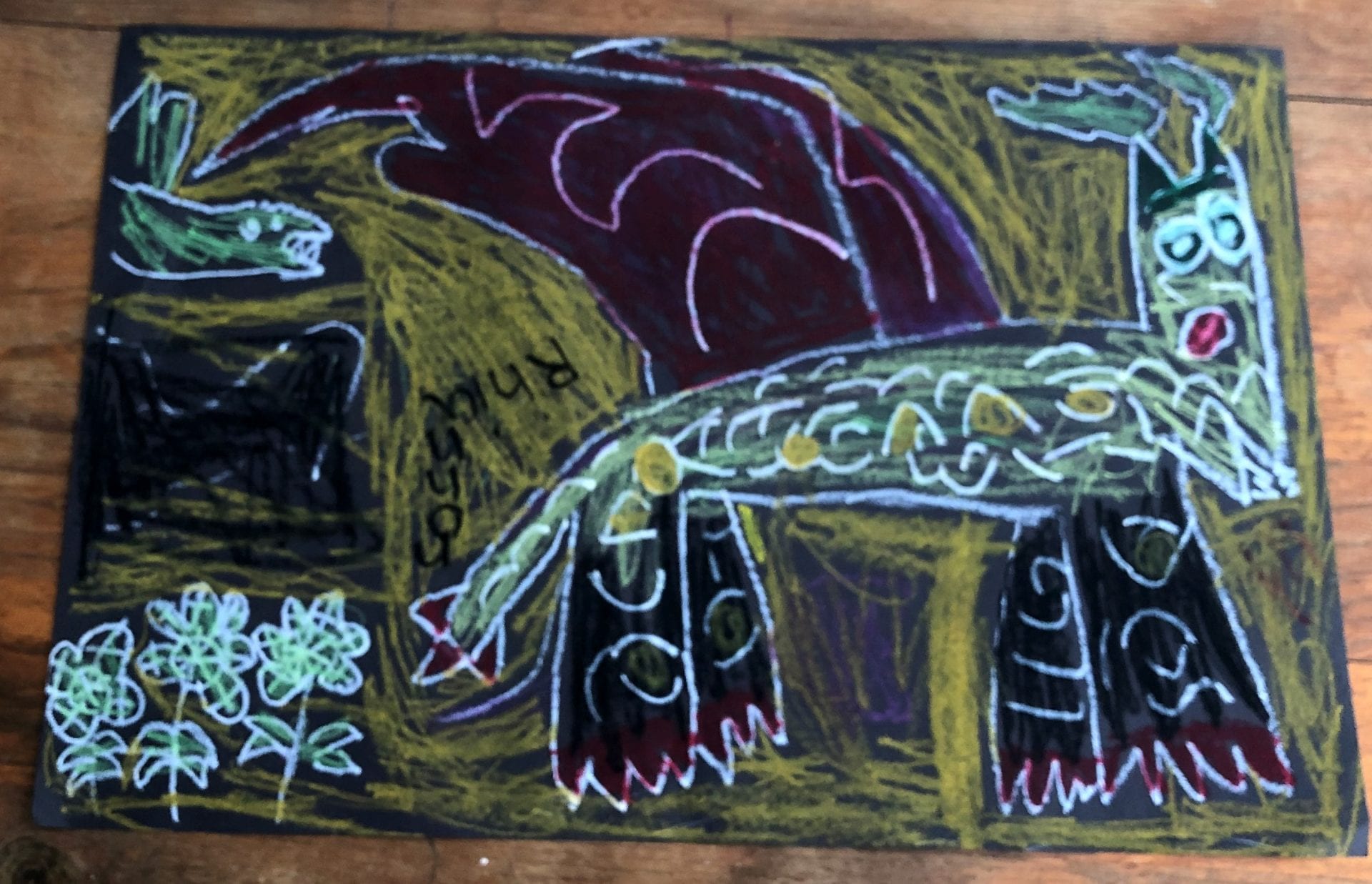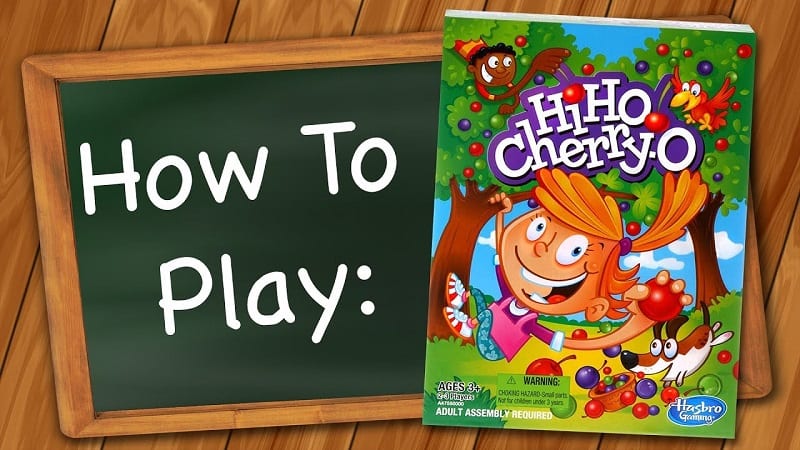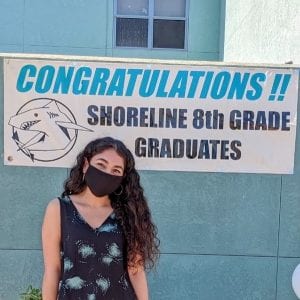 This blog post was originally posted by the Santa Cruz Museum of Art & History (MAH). Read the full interview and learn more about the museum’s newly launched downloadable lesson plans at santacruzmah.org/blog/
This blog post was originally posted by the Santa Cruz Museum of Art & History (MAH). Read the full interview and learn more about the museum’s newly launched downloadable lesson plans at santacruzmah.org/blog/
You finished your first year as a teacher and I am sure the end was not how you imagined it. How was the transition to distance learning?
Kenia: This was most certainly not what I imagined my first year teaching to be, yet it turned out to be exactly what I needed. Although I will probably forever be mourning my unfulfilled end-of-year plans and celebrations with my first group of students, I am incredibly grateful for the opportunity to take a step back and embrace a more purposeful and meaningful approach to my teaching. Feeling depleted after completing UCSC’s intensive 12-month MA in Education and Teaching Credential Program and not having the time to prepare curriculum prior to the start of the school year, I labored away and fell on my colleagues for support.
I felt as though I was on training wheels the entire time. It wasn’t until the pandemic hit that the training wheels were instantly and unexpectedly knocked off. All of a sudden, everyone, even the colleagues who I looked to for curriculum support, were back to square one with me. What was I to do now?! I came to the realization that any attempt at the business as usual approach would further be soul-crushing for my students during this time. How would I make this time meaningful? I took it a day at a time and moved even more deeply into culturally responsive teaching with a focus on the heart.
In engaging with your students digitally, what new teaching styles did you try?
Kenia: This pandemic striking so early on in my career allowed me to take a much-needed step back and to reflect on my teaching – to move in a more purposeful, imaginative, and creative direction. Upon doing some inner work and research, I decided to focus on the 5 critical qualities of digital citizens, which teach students to be 1. inclusive, 2. informed, 3. engaged, 4. balanced, and 5. alert. I first and foremost focused on my students’ social-emotional needs during such a traumatic time. Then, I focused on creating an assignment that would promote student agency, reflection, and healing. Although COVID was being treated like this big elephant in the room in the world of teaching, I decided to trust my students with this important and relevant event.
Writers write about what they know and what matters, and what was important and relevant to them all was COVID, as we were all propelled into the middle of this historic event together. By engaging my students in the importance of capturing their own stories and histories through this historic pandemic (we wrote COVID-19 Memoirs), students naturally had the opportunity to reflect on and heal from the overwhelming impact this event had on their lives. Additionally, my students had the opportunity to explore their identities through such reflective writing. I saw a beautiful fervor arise in them, an excitement to capture this historic event through their lives’ lenses. You can also check out my Youtube Channel to see firsthand how I am engaging with my students during this time.
What distance learning advice do you have for parents?
Kenia: Learning is a lifelong, everyday process. We must teach our students to once again be fascinated with the opportunities for growth and learning that are constantly occurring around them. Our homes are rich repositories of knowledge! Cooking a meal together, working on a home improvement project, researching plants and animals that we come across while we’re out in nature, discussing current events as we come across them in the media – these are all great examples of learning opportunities.
Additionally, during this distance learning time, parents have a wonderful opportunity to discuss the power of technology with their kids. These screens are not just for texting and messaging our friends, not just for video games, but they are tools to help us get a better sense of the world around us. The perspective of learning for too many students has been limited to what occurs in the classroom, but we must all acknowledge that every single person is responsible for the education of our youth.
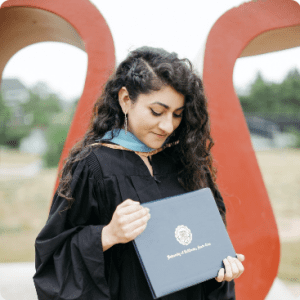 Kenia Goicochea, Middle School Teacher
Kenia Goicochea, Middle School Teacher
I achieved a Master of Arts in Education, Teaching Credential, and Bilingual Authorization at the University of California, Santa Cruz. My six years of experience as a bilingual educator as well as my multicultural background give me unique insight into working with a diverse array of students. For me, being an educator is more than a profession, it is my passion. I feel I am fulfilling my life’s purpose when compassion naturally arises in conversation with my students. Spreading love and creating a feeling of accomplishment, reward, and achievement is what makes this work so gratifying for me. I ultimately aim to use my devotion to equitable development as well as my values of cultural and linguistic development in order to make a positive personal impact on the world around me. I am thrilled to be teaching English Language Arts at Shoreline Middle School.
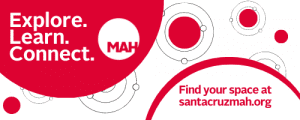 This blog post was originally posted by the Santa Cruz Museum of Art & History (MAH). Read the full interview and learn more about the museum’s newly launched downloadable lesson plans at santacruzmah.org/blog/
This blog post was originally posted by the Santa Cruz Museum of Art & History (MAH). Read the full interview and learn more about the museum’s newly launched downloadable lesson plans at santacruzmah.org/blog/




